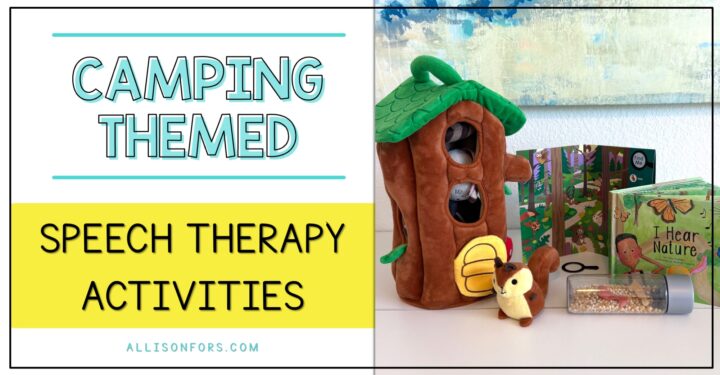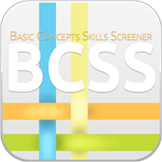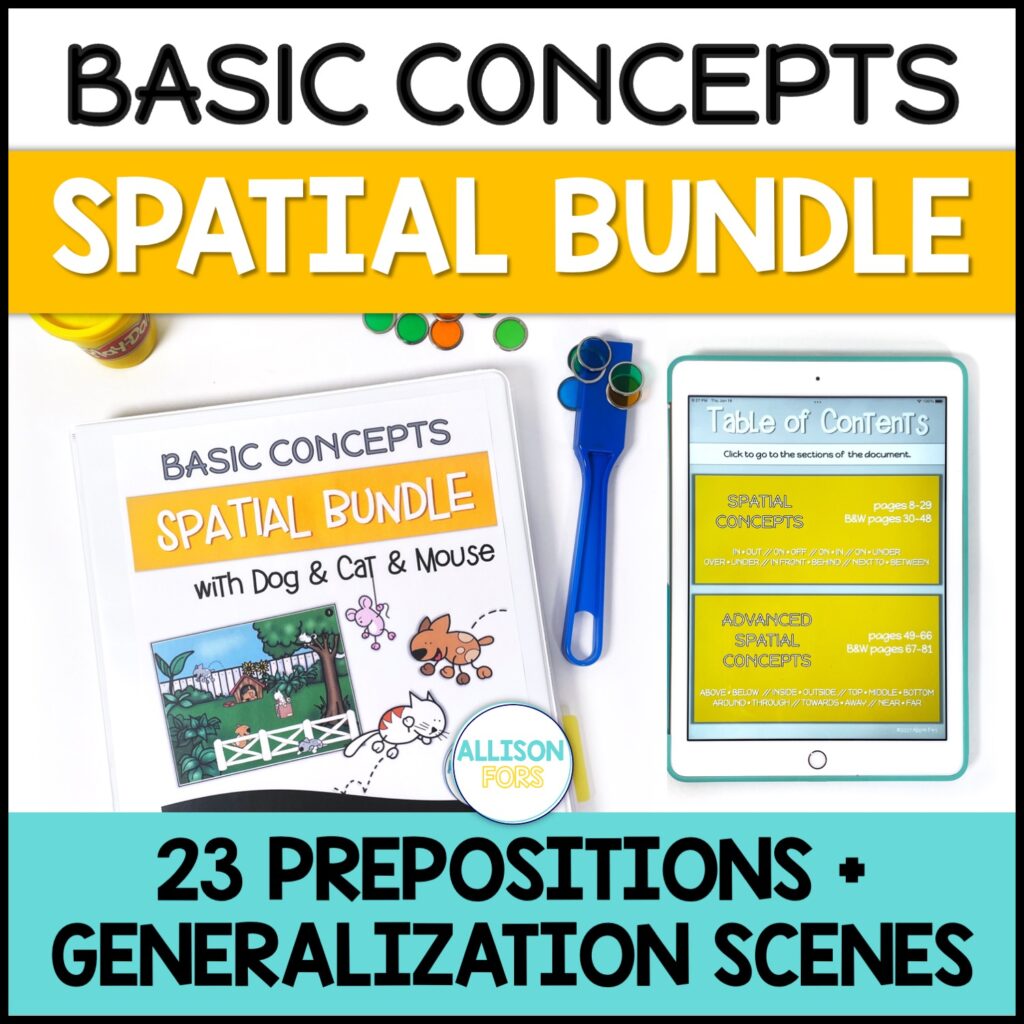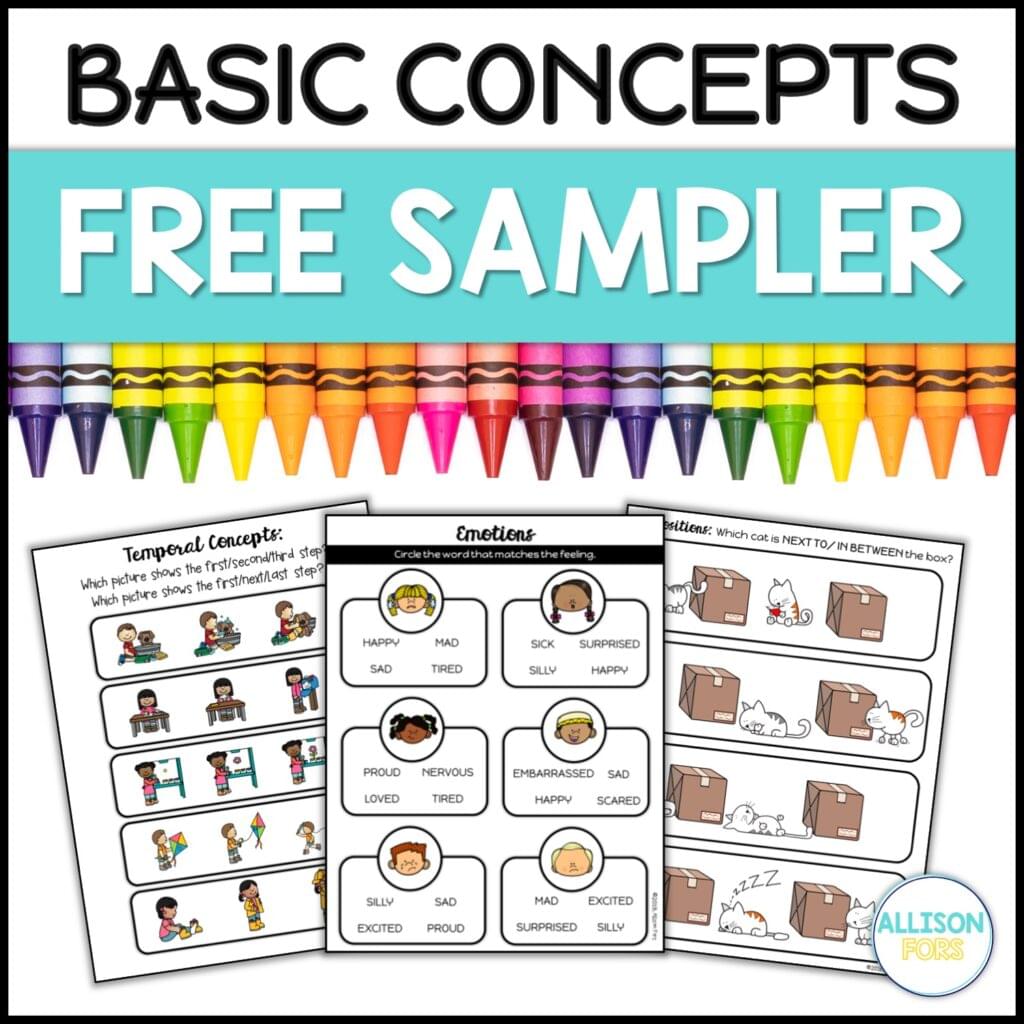
How and Why to Teach Basic Concepts

WHAT ARE BASIC CONCEPTS? WHY ARE THEY IMPORTANT?
Basic concepts are the fundamentals of language and an important aspect of academic tasks and instructions. Being able to comprehend and use basic concepts are the foundation of communicating and comprehending language. Their understanding and correct usage is critical for effective communication and success in all other areas of life, including school. For example, basic concepts encompass: following directions and routines, understanding mathematical terminology, and literacy.
Example types of basic concepts:
- Qualitative: big, little, same, different, separate
- Positional: up, down, next to, behind
- Temporal: first, then, last, before, after
- Quantitative: more, less, all
- Negation: not, no
- Emotions: happy, excited, upset
- Characteristics: hot/cold, awake/asleep, old/new
- Colors
- Shapes
- Sizes
- Patterns: stripes, polka dots
- Textures: smooth, liquid, rough

IDEAS TO TARGET BASIC CONCEPTS IN SPEECH THERAPY:
The great thing about basic concepts is they are common and the base of our language – so you can work on them by doing tons of different activities!
- Teach pairs which oftentimes are opposite concepts, for example, big/little, full/empty, happy/sad, up/down
- Model descriptive words: incorporate basic concept words into everyday life. Find opportunities to use basic concepts in the child’s environment and expand their language. For example, if the child says “I’m happy!” you can expand emotional concepts by replying “Yes, you’re excited!”
- Get physical! Use your body to get “on” the chair or go “fast”
- Books: Many books incorporate basic concepts. Highlight them or use the pictures to discuss developing concepts. Ask WH questions to encourage use of concepts!
- Crafts: If you enjoy doing crafts, this is a fun way to work on temporal concepts (first, next, last, before) or discuss textures, colors, and shapes.
- Playhouse: Dollhouses are an easy, functional way to incorporate tons of concepts into play. Read an in-depth post on using a playhouse.
- Play kitchen: Food is a great way to work on basic concepts, such as hot/cold, colors, and textures. Read an in-depth post on using a play kitchen.
- Wind-up toys: fast/slow, positional concepts. Read an in-depth post on using wind-up toys.
- Barrier games: These types of games are made to work on concepts! Colors, prepositions, vocabulary, and more. Read about barrier games here and download a free one!
SPECIFIC SPEECH THERAPY RESOURCES:
- Smarty Symbols Basic Concepts Screener
- Chipper Chat Basic Concepts
- Basic Concepts Bundle: Temporal, Qualitative, Quantitative, Negation
- BOOM CARDS Basic Concepts Bundle: Temporal, Qualitative, Quantitative, Negation
- Basic Concepts Bundle 2: Adjectives, Categories, Social Emotional, Patterns and Textures
- Spatial Concepts Bundle




Grab a FREE Basic Concepts Sampler!

Interested in more fun way to teach basic concepts?
27 Basic Concepts Activities for Speech Therapy

If you enjoyed this post, please share it!






4 Responses
Hi, Allison! I was so happy to come across your resources! My daughter had a developmental evaluation at 13 months, and the assessors said she has a 30% delay in expressive communication. Unfortunately, we cannot afford the cost of state-provided speech therapy, so I have been doing my best to work with my daughter at home on my own. She is now 18 months old. She has a few “words” (actually, the bare minimum to make the pediatrician happy) and several signs. She learns signs fairly quickly, and she follows complex directions. I’m a certified elementary teacher (not currently working), but I know nothing about speech. I am so excited to start looking at your resources, but I am a little overwhelmed. Could you suggest a starting point for me? Thank you so much for your help and all of your hard work!
Hi! Check out this post: https://allisonfors.com/elicit-language-development/ and I love teachmetotalk.com blog posts for parents of younger children.
Thank you! Your post is incredibly helpful. We’ve been reading, singing, and narrating until our voices are hoarse! Your post gives some more direction about how to do those things more effectively, which is exactly what we need. And I will definitely check out Teach Me to Talk.
May i ask what norms are you basing this on like chart wise or book wise I’m a grad slp an dim trying to find norms for quantity basic concepts for all and some with age milestones